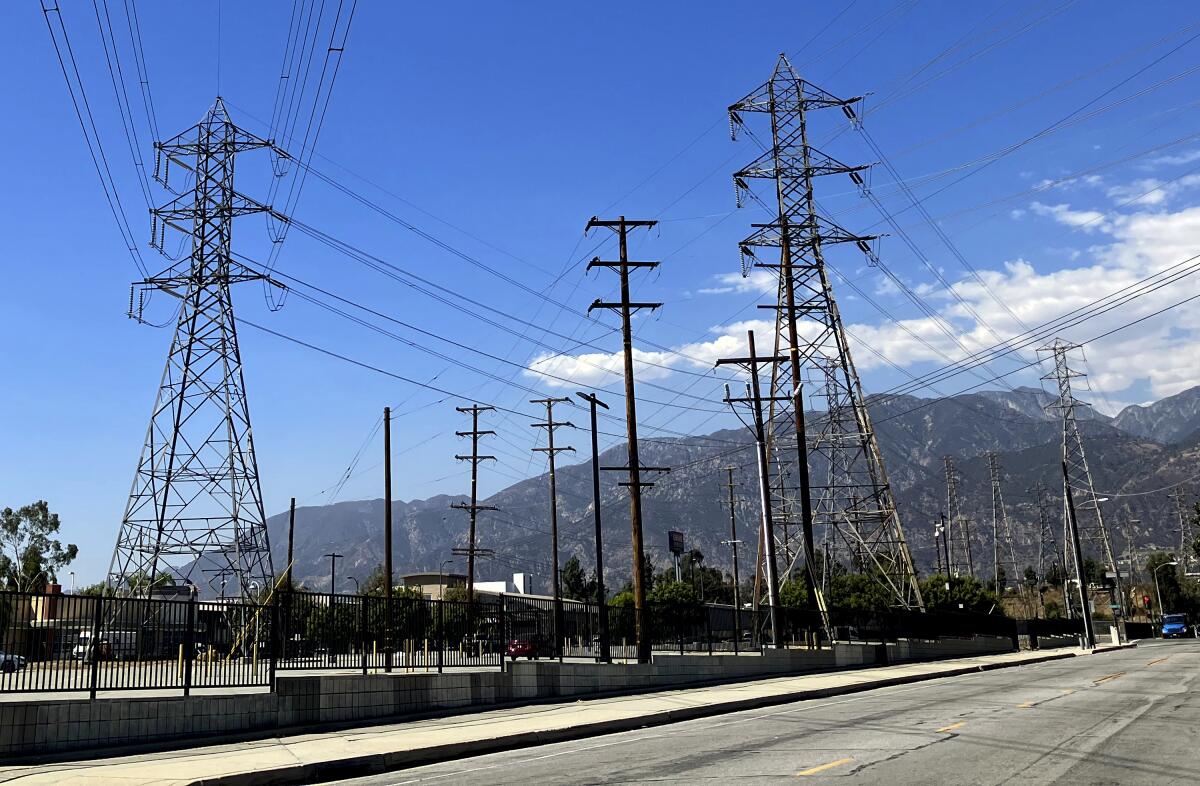California proposal would change how power bills are calculated, aiming to relieve summer spikes

SACRAMENTO — It’s become a rite of summer in sunny California: When the temperature spikes, so do electricity bills, leaving some customers with monthly payments over $500.
A big reason for that is the way California’s largest power companies calculate rates. The more power you use, the more money you pay — not just for electricity, but also for things like maintaining the grid and reducing wildfire risk.
A proposal unveiled Wednesday by state regulators aims to change that. Instead of calculating bills based mostly on how much power people use, a portion would be a fixed charge. For most people, that charge would be $24.15 per month. People who are enrolled in low-income assistance programs or who live in deed-restricted affordable housing would pay less — either $6 or $12, depending on their situation.
To offset this new charge, the rate people pay for using power would go down. During peak hours when electricity is in the most demand — and the most expensive — rates for customers of the state’s big three utilities would fall between 8% and 9.8%. That means the average customer in Fresno, where temperatures were at or above 100 Fahrenheit (37.8 Celsius) for 17 days last July, would save about $33 during the summer months, according to the California Public Utilities Commission.
People who own electric cars and charge them at home would save about $25 per month on average, while people who have fully electrified their homes — including replacing gas-powered stoves — would save about $19 per month. Other customers whose bills are not affected as much by the weather would likely see an increase.
Finance officials who objected to the state’s first-ever heat illness prevention rules for indoor workers need to deal with reality.
“I think it’s a wise idea to put us in a position where we’re incentivizing electrification and clean vehicles and then also providing some relief to those customers who really can’t help using a lot of electricity in the summertime,” said Alice Reynolds, president of the California Public Utilities Commission. “This is part of a reaction to a changing climate where we have these extreme weather events.”
California is one of the only states that doesn’t already have a fixed charge for its largest utilities, and the state Legislature ordered regulators in 2022 to implement one by July 1 of this year. Since then, power bills have only gotten more expensive. Regulators approved an average increase of $32 per month for Pacific Gas & Electric Company customers just last year. The average price per kilowatt hour of electricity for California’s big three utilities — Pacific Gas & Electric, Southern California Edison and San Diego Gas & Electric — is about 36 cents, compared with the national average of 17 cents.
The prospect of a new charge that could raise some people’s rates has prompted backlash from some state and federal lawmakers. In the state Legislature, a group of Democrats led by Assemblymember Jacqui Irwin of Thousand Oaks has introduced legislation that would cap the fixed charge at $10 for most people and $5 for people with low incomes. Irwin said the California Public Utilities Commission “is out of touch with consumers.”
“We need to prioritize driving down consumer’s overall bills, not redistributing the ever-increasing (investor-owned utilities) electric rates,” Irwin said.
On Wednesday, a group of 18 members of Congress from California sent a letter to Reynolds urging state regulators to keep the new fixed rate low. Their letter said the average monthly fixed charge in the United States is $11.
“There is little to stop utilities from continuing to increase electric rates once they secure the highest fixed charges in the country,” the letter said.
The Predictable Power Coalition, which includes the big three utilities, called the fixed rate “vital” and said the proposal “is a step in the right direction.” Some of the state’s most well-known consumer advocates, including the Utility Reform Network and the California Public Advocates Office, support the proposal because they say it would make utility bills more affordable.
Others, including the solar industry, worry that if electricity rates are cheaper during peak hours people won’t conserve as much energy. California has struggled at times to have enough electricity during these periods, especially during extreme heat waves, which caused some rolling blackouts in 2020.
Read all of our coverage about how California is neglecting the climate threat posed by extreme heat.
“In this time when it’s all hands on deck about climate change, why would we have people say, ‘You know what? I’m not going to hang out my laundry today because I’m just paying a fixed charge anyway,’” said Bill Allayaud, California director of governmental affairs for the Environmental Working Group.
Reynolds noted that California’s big three utilities will still charge more for power during peak hours but that the fixed charge would make sure the increase is more evenly distributed among customers. She also noted the big three had proposed fixed rate charges of $51 and $73. The commission rejected those amounts.
Most of California’s publicly owned utilities already have a fixed charge as part of their billing structure. Regulators’ proposal mirrors the fixed rate charged by the Sacramento Municipal Utilities District.
“Millions of people already have a flat rate component of their bills. They may not know it,” Reynolds said.
If it’s approved by regulators, the rule would take effect in 2025, and customers would not see the charge until later that year or in early 2026.
More to Read
Sign up for Essential California
The most important California stories and recommendations in your inbox every morning.
You may occasionally receive promotional content from the Los Angeles Times.












